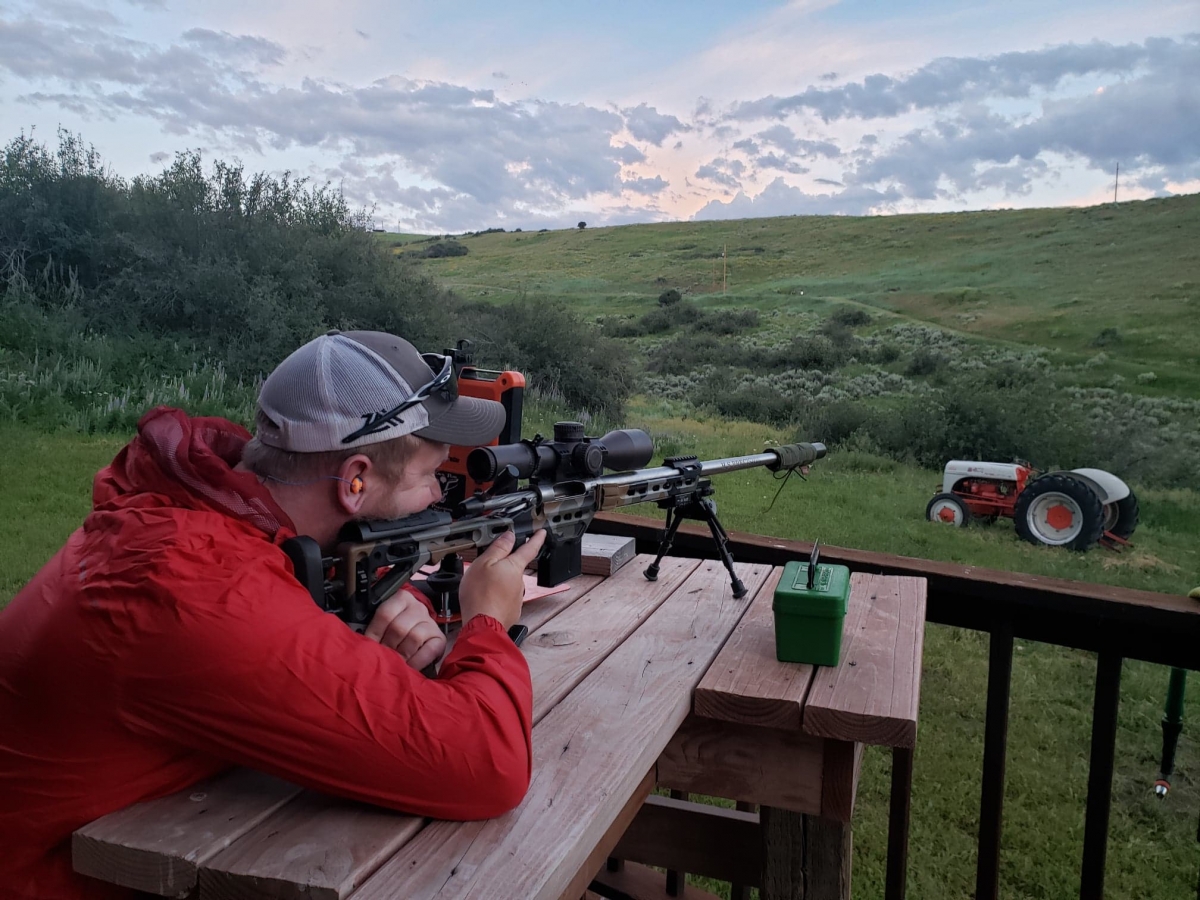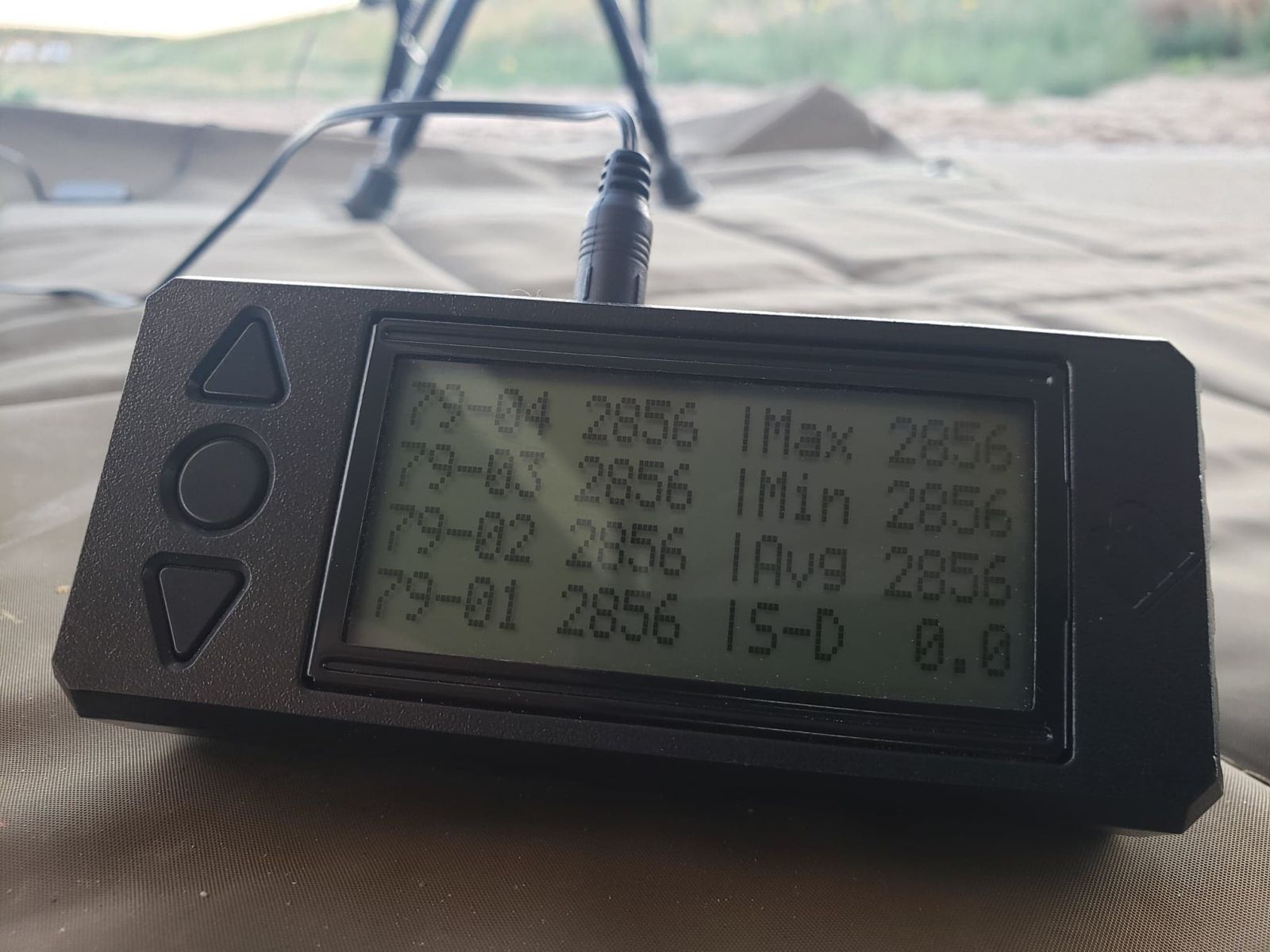
You’ve just flown from Atlanta to Denver to take part in a hunt of a lifetime, a bull elk in the Rocky Mountains. You’ve done all you can to make sure the hunt is successful including picking a great outfitter, securing tags in the right unit, gym time, buying a new rifle, and setting up a new scope. However, when you take the shot is your ballistic data going to line up to take the elk of a lifetime?
Unfortunately it’s not an uncommon occurrence at Rocky Mountain Ranches to see a few hunters miss critical shots. We put our hunters in the best possible situation only to have game missed or wounded due to simple mistakes made verifying ballistic data. Assuming your Bullet Drop Compensation (BDC) reticle or custom turret aligns with your actual bullet drop is becoming the most common reason for wounding or missing animals on the ranch.
In this article we’ll cover some suggestions for truing up your data in our high altitude environment with common BDC reticles or custom turret solutions. We’ll also share what we’ve learned shooting Precision Rifle Series and National Rifle League (PRS / NRL) matches with first focal plane scopes for quick dialing/holds.
Your Rifle’s D.O.P.E.
Today it’s easy to purchase an accurate rifle and pair it with quality scope, a good box of ammo and make short range hits with the data from the back of the box and a free ballistic app. Many successful hunters adjust their 100 yard zero to a max point blank range and never take a shot past that distance. However, if you’re wanting to extend your range and make precise shots here’s a few tips to be successful.

Get a Chronograph
Don’t trust the velocity on the back of the box, often times it isn't the same as what your rifle is producing. Barrels, lots of ammo, powder types, and environmental conditions can all change the speed at which your bullet is traveling. Investing in a chronograph is essential.
A good option is the Magnetospeed Sporter. At the writing of this article MidWay USA had them for $159.99, and they are well suited for quick velocity checks without breaking the bank. Simply strap the unit on with the right spacers and fire 3 to 5 shots over the bayonet to get velocity readings at the muzzle.
Know Your Rifle and Scope
Information about your rifle should be readily available on a manufacturer’s website, or from your gunsmith. This includes barrel twist direction (normally right), barrel twist rate, and scope bore height. You’ll want all of this when entering calculations in a ballistic solver. Then figure out what adjustment unit your scope is in. Generally ¼ MOA or 0.1 Milliradians (Mils) per click.
Shoot Your Ammo out to Distance
Make sure you find a range where you can check if your ballistic solver is matching what you’re seeing downrange. Ideally you’d shot at the maximum distance you’re comfortable taking game at. Then you can verify if your rifle is staying consistent and accurate at that distance. Don’t buy one box of ammo and conserve it by shooting a zero, getting velocity data, and assuming all is well. You just spent $500 on a backpack, you can buy a few boxes of ammo too.
Those are the basics, and there’s numerous YouTube videos and how-to articles covering these topics. The real key is matching it up with the scope you’ve purchased. There’s a lot of options from BDC reticles, custom turrets, first and second focal plane reticles, etc. We’ll cover the how to true up your DOPE with two we see most on the ranch: custom turrets or BDC reticles in scopes with reticles on the second focal plane.
Custom Turrets
Custom scope turrets matching your rifle’s D.O.P.E are great. No matter what focal plane your reticle is in, or magnification your scope is on, you dial your yardage and fire. Assuming your range to target and data is correct (and you've made a good wind call) you will have a clean and humane kill on your hands. However, that’s not always the case.
We’ll use Leupold’s Custom Dial System (CDS) as an example on how to get a scope manufacturer the right information the first time. When you send Leupold your rifle, ammo, and environmental specifications, they’ll make a turret matching those parameters. All of the scopes with the Custom Dial System listed as an option come with one custom turret, and any additional turrets are $80. Meaning you could have a turret set up for your hunt in Craig, and one for your deer stand in Georgia.
Some things to keep in mind are actual velocity, atmospherics in the location you’re shooting (not your home location) and true ballistic coefficient (BC) of your bullet. Having this correct will help Leupold create a turret that accurately matches your rifle.
Keep in mind that bullet BC numbers can be off, though that is fairly rare today. Check the Applied Ballistics verified BC for your projectile and compare with the manufacturer. Use this as a starting point, then verify at the range. Also, using a G7 BC for boat tail bullets will yield the best results, while using G1 is advantageous if you’re using flat base bullets. Boat tails provide more stability and accuracy at long ranges, while flat base are excellent for short range accuracy.
.jpg) One example of how errors can compound with incorrect inputs in a ballistic solver involves testing we’ve been doing on a Seekins Havak PH1 chambered in 6.5 PRC. Hornady lists 2,910 FPS for the 147 grain ELD-M 6.5 PRC match ammo. In our test rifle we shot 3 boxes of different lot ammo that produced velocities from 2,845 FPS to 2,810 fps. That variation could have gotten a hunter in trouble had they not checked their data. So keep this in mind before you call up and order a turret for your Leupold VX-5HD with CDS. Then after the turret has been made, verify the turret/data is lining up with that you’re seeing on paper or steel.
One example of how errors can compound with incorrect inputs in a ballistic solver involves testing we’ve been doing on a Seekins Havak PH1 chambered in 6.5 PRC. Hornady lists 2,910 FPS for the 147 grain ELD-M 6.5 PRC match ammo. In our test rifle we shot 3 boxes of different lot ammo that produced velocities from 2,845 FPS to 2,810 fps. That variation could have gotten a hunter in trouble had they not checked their data. So keep this in mind before you call up and order a turret for your Leupold VX-5HD with CDS. Then after the turret has been made, verify the turret/data is lining up with that you’re seeing on paper or steel.
Also be mindful of that box of ammo you bought last year. It might not line up with the one you bought last week. It also might line up perfectly, but expect lot to lot variation. With the above example, the velocity variation would have caused the bullet to impact 4 inches lower than expected at 500 yards had we been running a velocity of 2910 instead of 2810 fps.
BDC Reticles
Bullet Drop Compensation reticles mostly come in second focal plane scopes that are popular for hunting and affordable. We’ll be using the Vortex Diamondback 4-12x40 scope with a Dead-Hold BDC reticle in MOA as an example.
With a 100 yard zero, the subtensions go from 1.5 MOA, to 4.5 MOA, 7.5 MOA and the bottom of the reticle post is 11 MOA. Generally speaking the marks would be 200, 300, 400, and 500 yards. Given a zero wind condition you would be able to hold to 500 yards, not worry too much about spin drift, and make a hit. What if it doesn’t line up?
As an example let’s take the same 6.5PRC with a 143 ELD-X going 2950 fps. In the conditions in Craig, Colorado around October/November, your drops would look this: (Courtesy of JBM Ballistics)

This is using what Vortex classifies as a Class A firearm/caliber such as a 30-06. You can see the PRC lines up pretty well out to 300 yards, after that it has a flatter trajectory than the 30-06. The PRC then lines up better with what Vortex classifies as a Class B caliber such as a 7 Remington Magnum or a 300 WIN Mag, and a 200 yard zero. (See reticle document: https://vortexoptics.com/amfile/file/download/file_id/663/product_id/1449/) Neither one lines up perfectly with this particular load, but that's not a problem. With some quick calculations via the Vortex LRBC, you can get your BDC reticle lined up perfectly.
With this 143 ELD-X 6.5 PRC load our first hold is 1.5 MOA, or 210 yards. Second hash is 4.5 MOA, which equals 355 yards. Third is 7.5 MOA or 480 yards. Lastly, 11 MOA would get us out to 620 yards. Looking at the chart above you can see where assuming your BDC is lining up with your load can compound into D.O.P.E errors at longer ranges. It’s so easy to calculate this with apps and websites, it’s a sin to not take the time. Then when the time comes, you can take a precise shot at a range you're comfortable with.
Additionally, with second focal place (SFP) scopes make sure you’re on full power if you’re holding over to make these shots. Reticles in most SFP scopes need to be on full power for the subtensions to be correct. If you’re not, those subtensions are no longer correct.
First Focal Plane Optics
Your head may be swimming after all that. It may make perfect sense. Hopefully it at least makes some sense. All of this is why shooters that compete in the PRS and NRL have moved away from SFP scopes and into exposed turret front / first focal plane (FFP) optics. Why? Because it’s fast and easy.
With a FFP optic we can range a target, dial or hold D.O.P.E that was created with current atmospherics, and make an easy shot. With FFP scopes the reticle subtensions are always correct no matter the magnification. Coupled with a scope that has a locking elevation turret and a locking or capped wind turret, and you’re in the business of measuring, holding and shooting like a pro while not bumping turrets walking up the mountain. Good examples of FFP scopes well suited for hunting are the Leupold Mark 5 HD, Vortex Razor HD AMG, and the Nightforce NX8.
However, one common complaint of these scopes is it’s hard to see the reticle at low power. Picking the right reticle is key. At low magnification you’re also likely in a short range shooting situation, where these topics are less critical. Because of this, you can see why many people are moving towards FFP scopes and why they’re a must in the practical/tactical competition world.
Conclusion
It may be a lot to digest, but it’s nothing a few range trips can’t fix. Whether you go CDS, BDC, FFP or SFP, it is all easy to figure out. The bullet never lies. If you put in the range time with your rifle, figuring out DOPE is a win/win for you, your outfitter and the game you’re pursuing.
